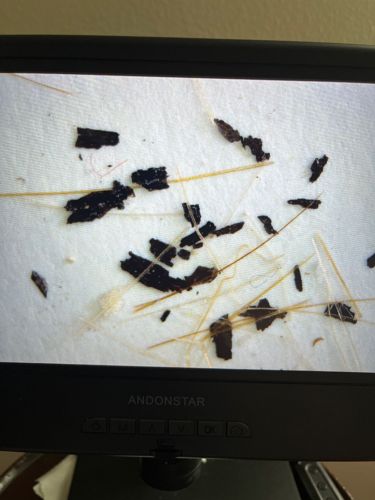Flea (excrement/flea dirt)
Scientific Name: Ctenocephalides spp. (primarily C. felis or C. canis for domestic animals)
Order & Family: Siphonaptera (Order), Pulicidae (Family)
Size: Flea dirt particles are very small, usually less than 1 mm in length, appearing like black specks or flakes.

Natural Habitat
Flea excrement (flea dirt) is found wherever fleas are present, typically on the fur/skin of host animals (e.g., cats, dogs) or in areas where infested animals rest, such as bedding, carpets, and upholstered furniture. It consists of dried blood excreted by the flea.
Diet & Feeding
Flea dirt itself is not a diet item; rather, it is the dried blood consumed by fleas. Adult fleas feed exclusively on the blood of warm-blooded hosts.
Behavior Patterns
Flea dirt is a byproduct of adult flea feeding. Fleas bite their host, ingest blood, and then excrete digested and dried blood. These particles are often seen in areas where animals scratch or groom, and they fall off the host into the environment. When moistened, flea dirt dissolves into a reddish-brown stain due to the presence of blood.
Risks & Benefits
Flea dirt is an indicator of a flea infestation, which poses several risks. Flea bites can cause intense itching, skin irritation, and allergic reactions (flea allergy dermatitis) in both animals and humans. Fleas can transmit diseases such as tapeworms (Dipylidium caninum) and Bartonellosis ('cat scratch disease') to their hosts and, in some cases, to humans. There are no known benefits of flea dirt; its presence signifies a pest issue that requires management to prevent health problems for pets and humans.
Identified on: 9/7/2025